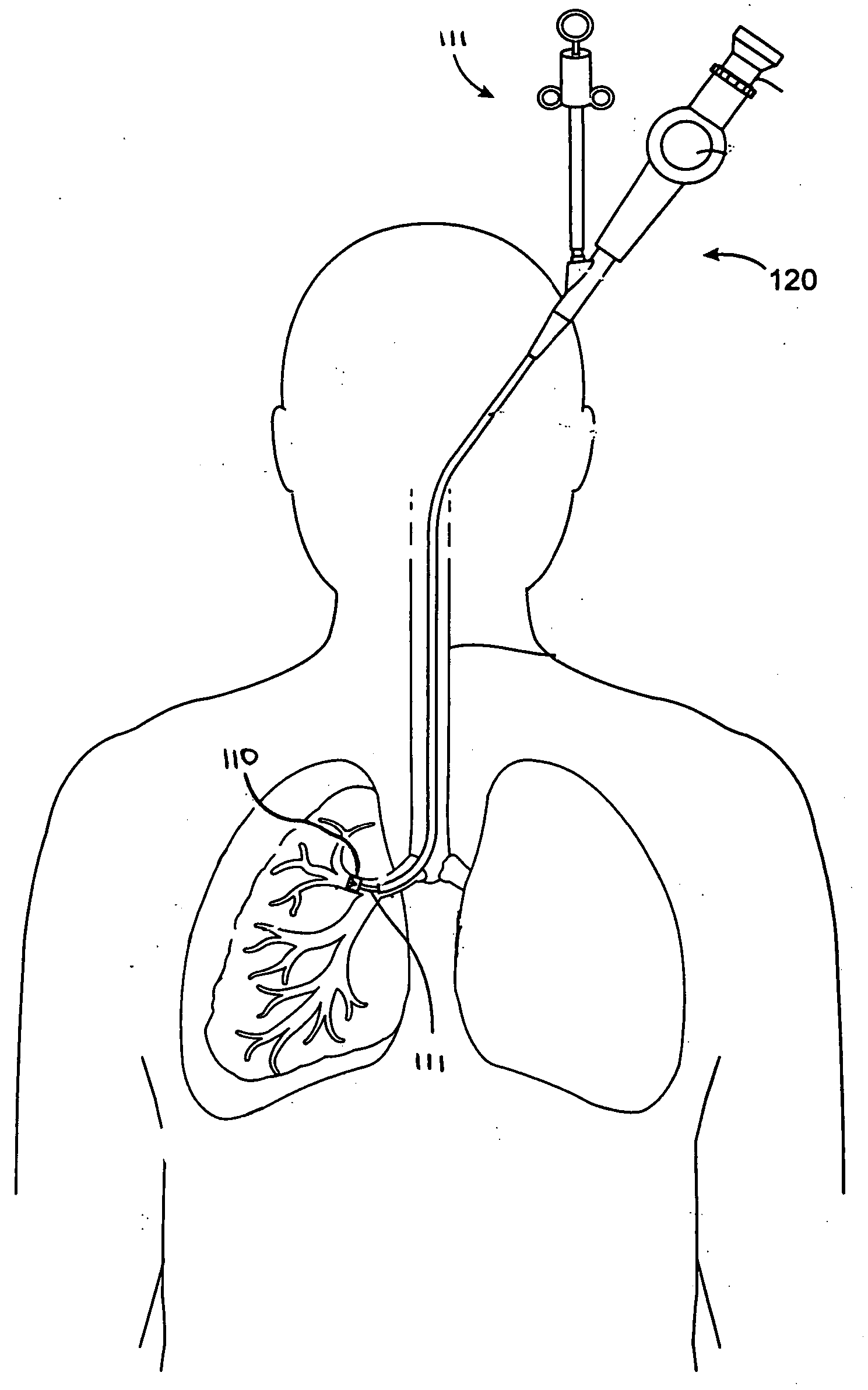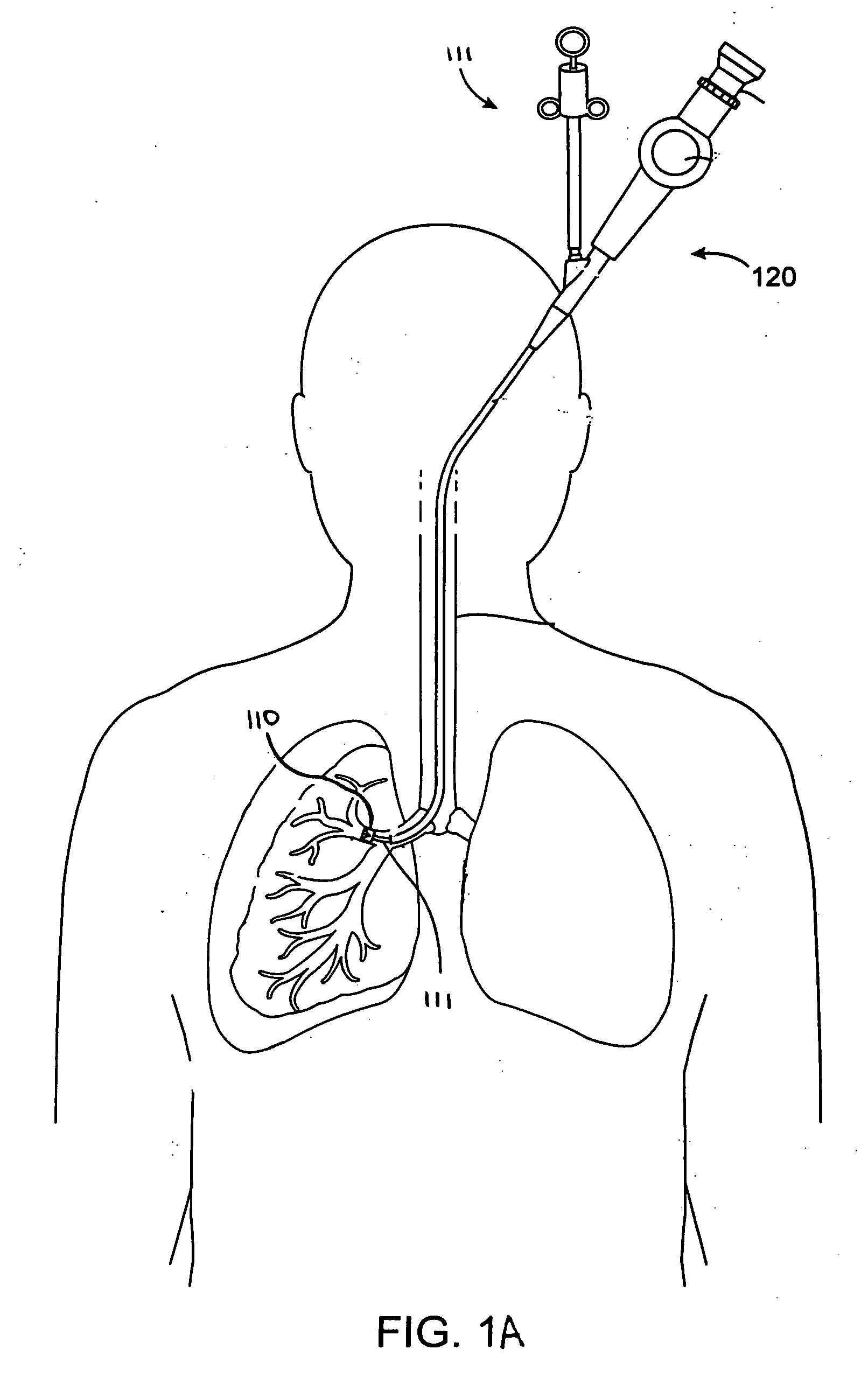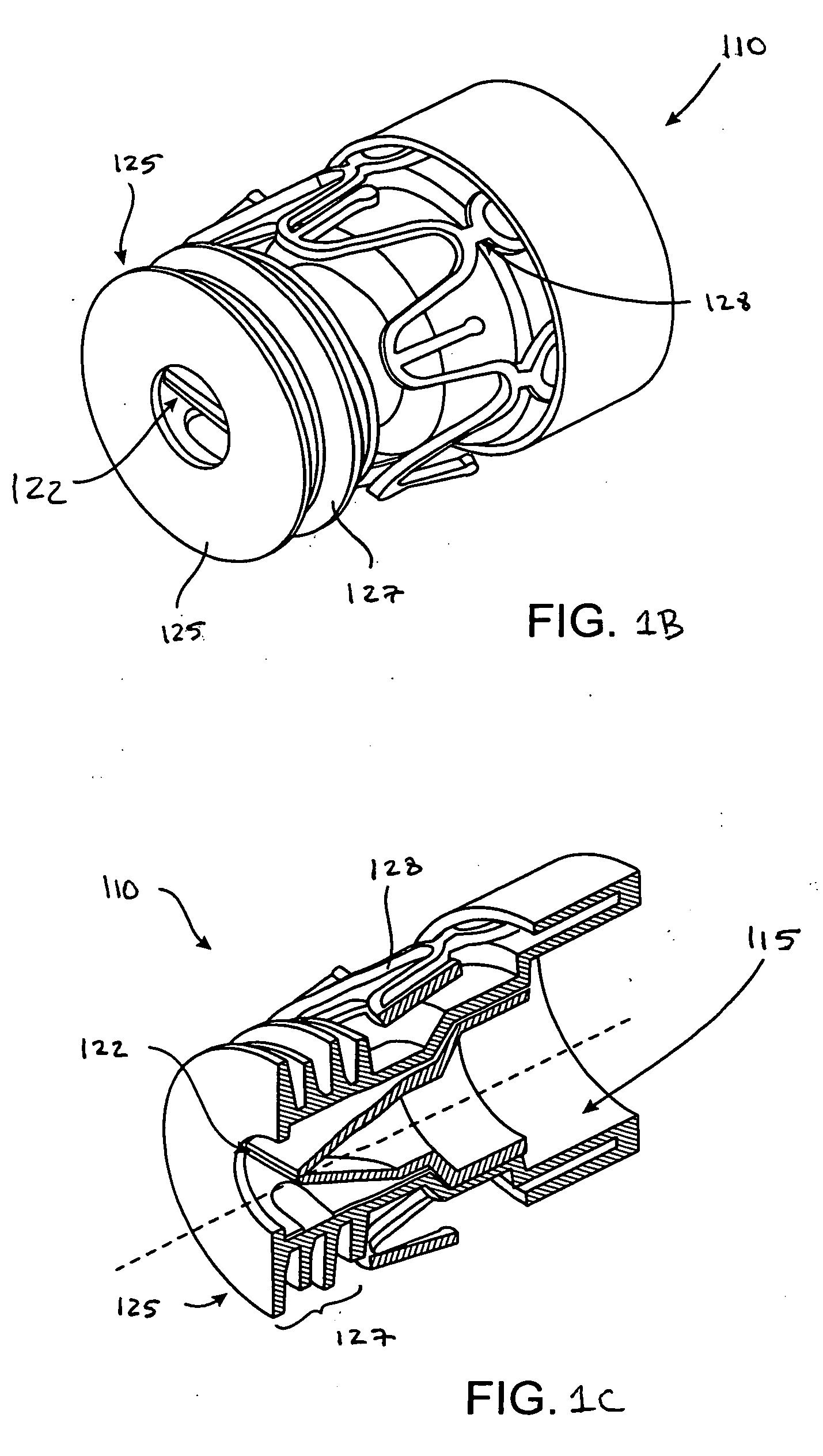Treatment planning with implantable bronchial isolation devices
a technology of bronchial isolation and treatment planning, which is applied in the field of lung procedures, can solve the problems of reducing the ability of one or both lungs to fully expel air, unable to maintain the narrow airways open, and less tone of diseased tissu
- Summary
- Abstract
- Description
- Claims
- Application Information
AI Technical Summary
Problems solved by technology
Method used
Image
Examples
example # 1
Patient Selection Example #1: Heterogeneous Disease with Zonal Analysis
The process for determining whether a patient is a suitable candidate for minimally invasive treatment is now described in the context of zonal analysis. According to the zonal analysis process, a patient is considered ineligible for minimally invasive treatment (i.e., the patient is excluded from treatment) if the distribution of the disease in the patient's lungs do not meet certain criteria. As mentioned, the Emphysema Scores are used to determine the distribution of the disease.
In one embodiment, a patient with Emphysema Score (ES) in either lung where Upper Zone=4, Middle Zone=4 and Lower Zone=4 is excluded from treatment. Table 4 includes a pair of charts that visually illustrate whether a patient satisfies the selection criteria relative to the patient's Emphysema Scores. The left-most column of each chart lists the possible Emphysema Scores for the right lung upper zone and the top-most of each chart r...
example # 2
Patient Selection Example #2: Heterogeneous Disease with Lobar Analysis
The eligibility process is now described in the context of lobar analysis. According to the lobar analysis eligibility process, a patient is considered ineligible for minimally invasive treatment (i.e., the patient is excluded from treatment) if the distribution of the scores throughout the lung lobes do not meet certain criteria, wherein the criteria is based upon the scores obtained in the previous step. The lobar analysis eligibility process is similar to the zonal analysis process. However, the process differs because the left lung has no Middle Lobe.
Pursuant to the lobar analysis, in one embodiment a patient is excluded from treatment if all lobes of either lung have Emphysema Scores of 4. Table 5 shows a pair of charts that visually illustrates whether a patient satisfies the selection criteria relative to the patient's Emphysema Scores. With reference to Table 5, all possible eligible Emphysema Score co...
PUM
 Login to View More
Login to View More Abstract
Description
Claims
Application Information
 Login to View More
Login to View More - R&D
- Intellectual Property
- Life Sciences
- Materials
- Tech Scout
- Unparalleled Data Quality
- Higher Quality Content
- 60% Fewer Hallucinations
Browse by: Latest US Patents, China's latest patents, Technical Efficacy Thesaurus, Application Domain, Technology Topic, Popular Technical Reports.
© 2025 PatSnap. All rights reserved.Legal|Privacy policy|Modern Slavery Act Transparency Statement|Sitemap|About US| Contact US: help@patsnap.com



